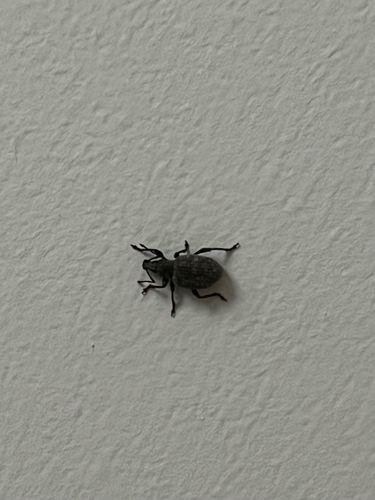Broad-nosed Weevil or a type of "true" weevil
Scientific Name: Curculionidae (general family name, specific genus/species would require closer examination)
Order & Family: Order: Coleoptera, Family: Curculionidae
Size: Typically 2 to 10 mm (0.08 to 0.4 inches), though some species can be larger.

Natural Habitat
Highly varied depending on the species. Many live in agricultural fields, gardens, forests, and warehouses where food products are stored. They can also be found in homes, especially if food sources are available.
Diet & Feeding
Primarily herbivorous, feeding on plant roots, stems, leaves, seeds, and fruits. Some species are specialized on specific plant types, while others are generalists. Depending on the exact species, they can feed on grain, rice, corn, beans, and other stored food products.
Behavior Patterns
Many weevils are slow-moving and may feign death when disturbed. They are typically herbivores and can be quite destructive to crops and stored products. Life cycles involve complete metamorphosis: egg, larva, pupa, and adult.
Risks & Benefits
Potential Risks: Many species of weevils are significant agricultural pests, causing substantial damage to crops in fields and to stored grains and foodstuffs, leading to economic losses. Some can infest homes, becoming a nuisance. Benefits: Some weevil species can be used for biological control of invasive weeds.
Identified on: 8/31/2025